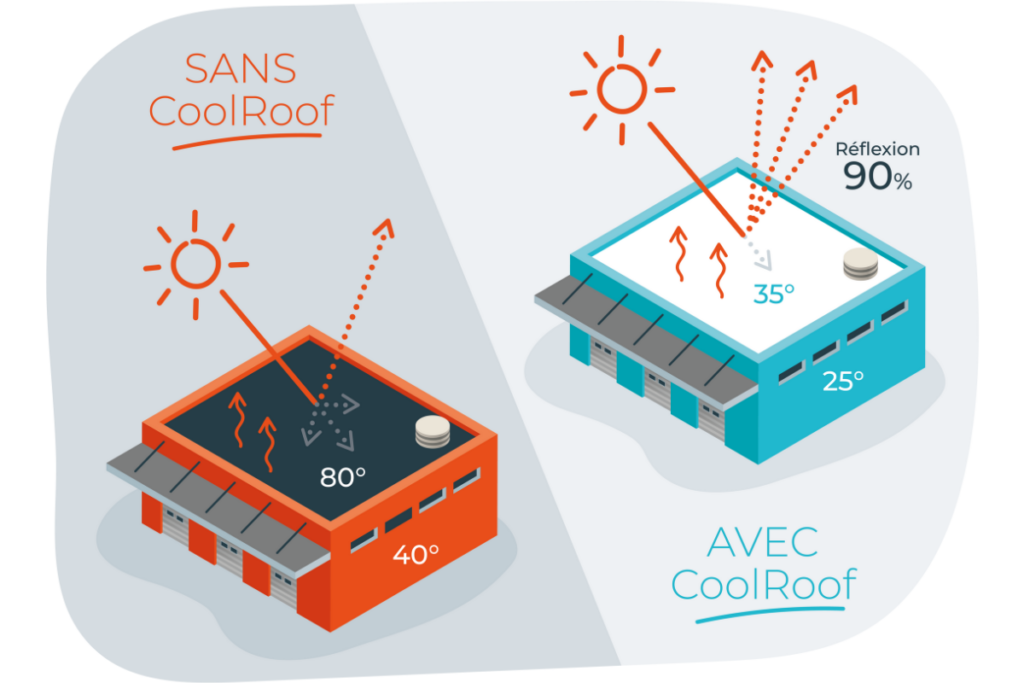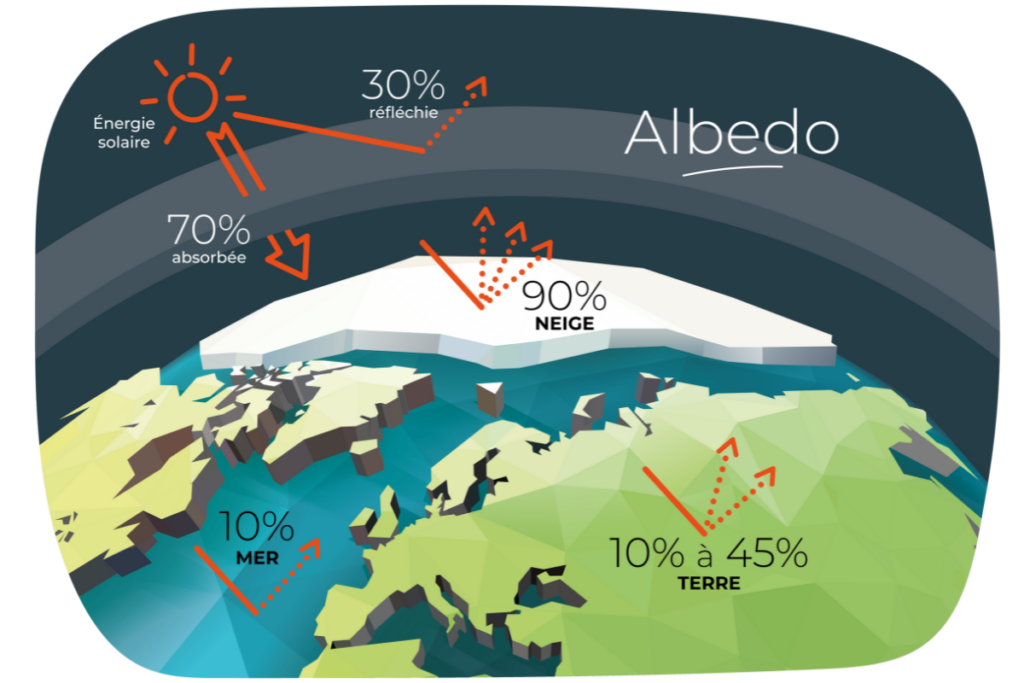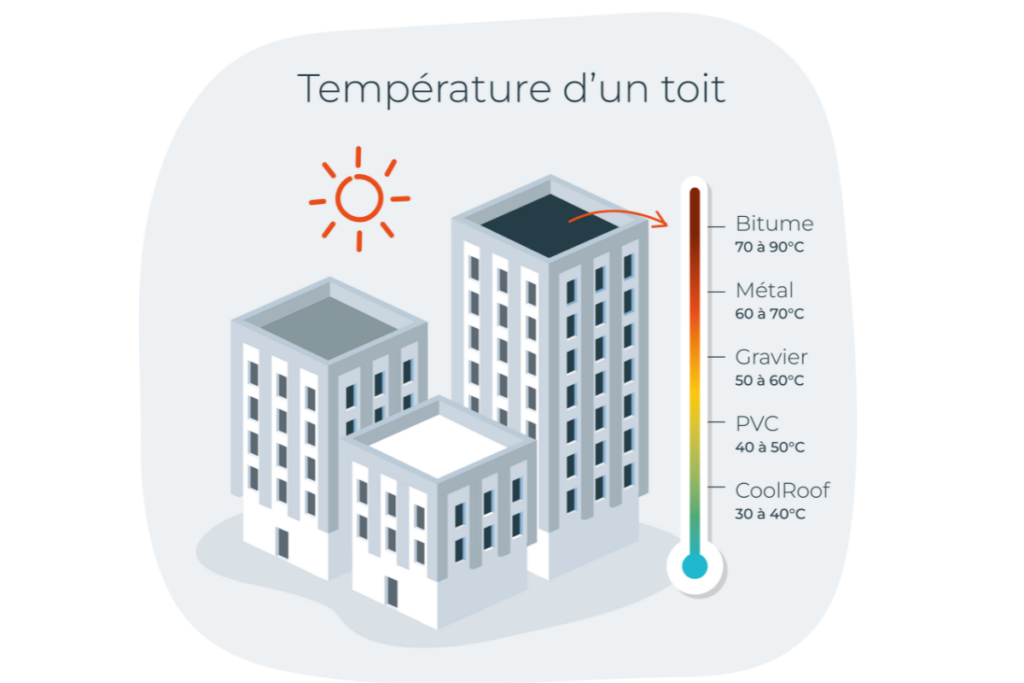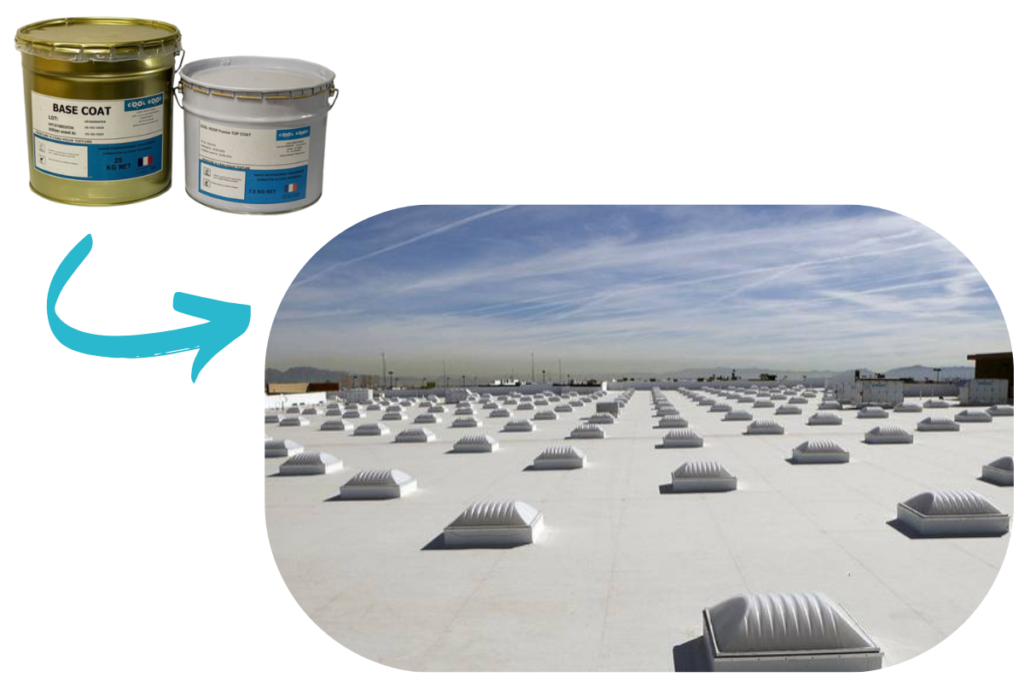When the solar radiation reaches a roof, various interactions occur, and this results in a warming of the roof. The heat accumulated by it then spreads into the building. Thanks to the CoolRoof, the solution of cool roofing, we offer, there will be less heat stored with a roofing classic. The building will eventually be more cool !

A Cool Roof (literally : roofing fresh) is a roof designed to reflect the solar radiation. The interest of a Cool Roof is to limit the warming of the building in the summer period. This helps to improve the thermal comfort of the occupants without the use of air conditioning, which is expensive and a source of greenhouse gas emissions.
This is all well and good, but how does it work ?

In summer, the buildings heat up because they have a great deal of solar energy. This energy comes to us in the form of radiation. Scientists have classified the radiation in different categories based on their properties. The rays of the sun are composed of three types of radiation :
🟣 The ultra-violet (UV) : they are invisible and very powerful but are also largely stopped by the atmosphere. That’s the one, received in large quantities, cause sunburn.
☀️ The visible light : it allows us to see distinctly and in color during the day. A light bulb or a headlight also emit this type of radiation.
🌡️ The infra-red (IR) light, invisible to them as they carry most of the heat. You issue permanently ! It is in the capturing function of the thermal cameras that can ” see ” at night.
When the solar radiation reaches the surface (whatever it is : floor, wall, roof etc.), three types of interactions occur :
These three types ofinteractions are used to define the “albedo” ofa surface, cis its ability to reflect light, and thus its ability to absorb or re-radiate the heat.

The proportions of the different interactions (reflection, absorption, re-emission) depend on the material and its color.
You’ve probably already seen this happen without you realizing it ! When a black car parked in the sun in the summer, the temperature in the passenger compartment rises much more quickly than in a white car. This is due to the fact that the white reflects light and black absorbs it. It is said that the white has a high albedo, that is to say, a reflective power high. Fans of winter sports are quite familiar with this phenomenon : when the sun illuminates directly the snow, it is better to wear his sunglasses in order not to be blinded !
Good, very good, the surface heats up more or less according to its color and the material of which it is composed. But that does not solve the problem of the suffocating heat in the buildings in the period scorching hot. And well…if part of it !
The roof, thisis nothingother than the 5th wall of the building. For lower temperatures, we think offirst theisolation of the 4 walls, and sometimes their color. Butlet us not forget that the roof is the first barrier against the sun and its rays.
The heat that is stored by a material that does not stand still : it spreads. Failing to be able to decrease the amount of radiation received (this, this are the sun and the atmosphere which needed !), so we will select materials that store heat, that is to say, materials, highly reflective and transmitters.

The principle is simple : apply a coating on the roof to capture less heat. The idea is not new, it has already several thousands of years ! The white color is particularly popular because it naturally has a high albedo (reflecting strongly the light).

On a building, all the zones are not exposed in the same way to the sun. The roof is particularly interesting in order for a refreshing summer. Indeed, it is the part of the envelope of a building which is exposed directly to the sun during the hottest hours of the day (when the solar radiation is the most intense). It is therefore the main entrance of heat into the building during these times, as the heat stored by the building envelope propagates to the interior.
This is especially true for flat roofs, for which the direct exposure is prolonged. In addition, by applying on the roof rather than on the walls, we follow the course of the sun : summer heat gain through the roof are limited, and in the winter the contributions by the walls are preserved.